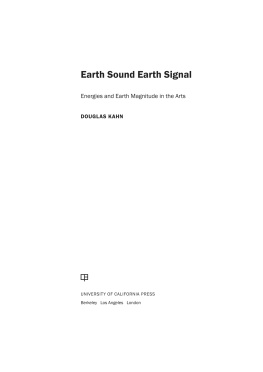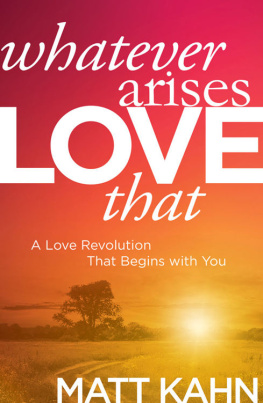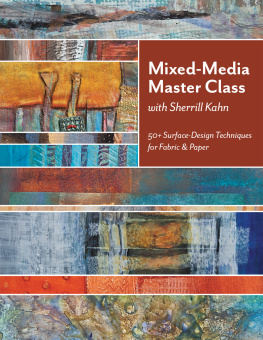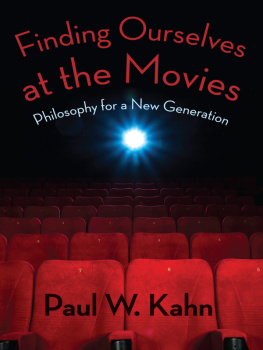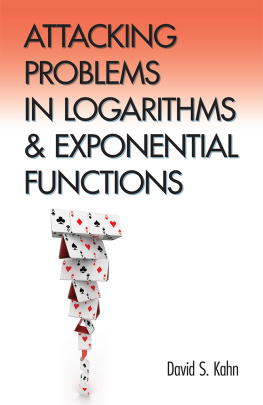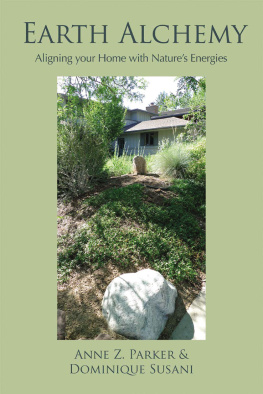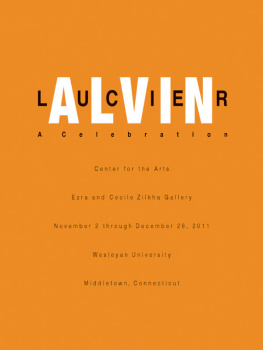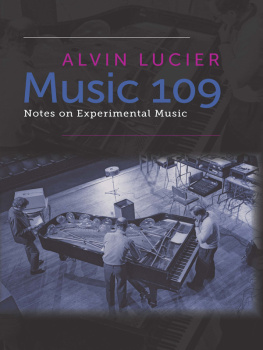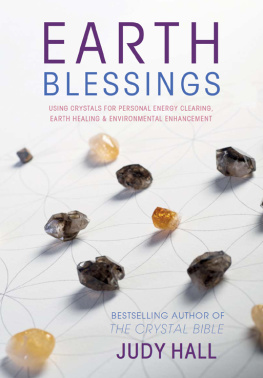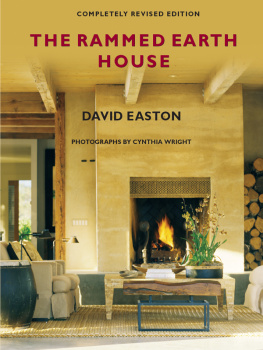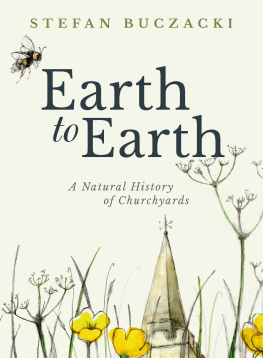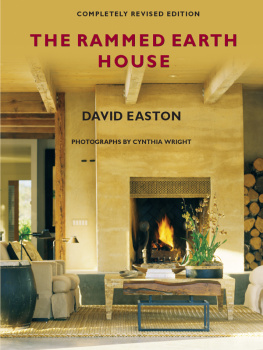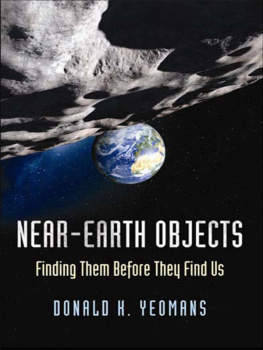

THE AHMANSON FOUNDATION
has endowed this imprint to honor the memory of
FRANKLIN D. MURPHY
who for half a century served arts and letters, beauty and learning, in equal measure by shaping with a brilliant devotion those institutions upon which they reply.
The publisher gratefully acknowledges the generous support of the Art Endowment Fund of the University of California Press Foundation, which was established by a major gift from the Ahmanson Foundation.
EARTH SOUND EARTH SIGNAL
Earth Sound Earth Signal
Energies and Earth Magnitude in the Arts
DOUGLAS KAHN

UNIVERSITY OF CALIFORNIA PRESS
BerkeleyLos AngelesLondon
University of California Press, one of the most distinguished university presses in the United States, enriches lives around the world by advancing scholarship in the humanities, social sciences, and natural sciences. Its activities are supported by the UC Press Foundation and by philanthropic contributions from individuals and institutions. For more information, visit www.ucpress.edu.
University of California Press
Berkeley and Los Angeles, California
University of California Press, Ltd.
London, England
2013 by The Regents of the University of California
Library of Congress Cataloging-in-Publication Data
Kahn, Douglas, 1951.
Earth sound earth signal : energies and earth magnitude in the arts /Douglas Kahn. 1 [edition].
p.cm.
Includes bibliographical references and index.
ISBN 978-0-520-25780-1 (cloth : alk. paper)
ISBN 978-0-520-25755-9 (pbk. : alk. paper)
ISBN 978-0-520-95683-4 (ebook)
1. Sound in art.2. Radio noise.I. Title.
NX650.S68K242013
700.108dc232013014804
Manufactured in the United States of America
22 21 20 19 18 17 16 15 14 13
10 9 8 7 6 5 4 3 2 1
In keeping with a commitment to support environmentally responsible and sustainable printing practices, UC Press has printed this book on Natures Natural, a fiber that contains 30% post-consumer waste and meets the minimum requirements of ANSI/NISO Z 39.48-1992 ( R 1997) ( Permanence of Paper ).
Contents
Illustrations
Acknowledgments
The support of friends, colleagues, correspondents, and institutions has made this book possible. A 2006 Guggenheim Fellowship provided dedicated time to research the historical discovery of natural radio; a 2008 Arts Writers Grant from Creative Capital | Warhol Foundation supported work on the book overall; and Vice President and Deputy Vice-Chancellor of Research Les Field at the University of New South Wales enabled me to take up my position at the National Institute for Experimental Arts (NIEA), affording time to complete the book. A grant from the College of Fine Arts, UNSW, provided assistance with manuscript preparation and image rights.
Interviewees, associates, families, and archivists are acknowledged in the books footnotes for their kind assistance. The books foundations were laid years ago at Wesleyan University, with my teachers Alvin Lucier and Ron Kuivila, and more recently through interactions with Peter Blamey, Robert Brain, Paul DeMarinis, Frances Dyson, David Haines, Stefan Helmreich, Linda Henderson, Hannah Higgins, Joyce Hinterding, Zita Joyce, Timothy Morton, Gordon Mumma, Hillel Schwartz, Blake Stimson, David Suisman, and James Tenney. Edmond Dewan was very informative and for me transformative. He passed away after a long and productive life, while I was finishing the book; I thank his son Brian Dewan for all his assistance. Jill Bennett and Ross Harley at the NIEA helped me think through many of the late stages of the project. My thanks also go to the readers who made helpful suggestions for improving the manuscript and to Mary Francis, Kim Hogeland, Julie Van Pelt, and Chalon Emmons at the University of California Press for their patience and expertise.
Particularly helpful were University of California at Davis physics professor Tony Tyson for his own experience as a telegrapher and for the Karl Jansky material he rescued; Oliver Staadt for physics and electronics lessons on country roads at 20 miles per hour; Jesper Olssons assistance with locating and translating Karl-Birger Blomdahl materials; Margaret Fisher for her work on Pino Masnata and Italian Futurist radio; Ken Sitzs expert guidance through atomic culture; Thomas Pattesons insights into early electronic music; Chris Schiffs encyclopedic knowledge and bloodhound skills for obscure documents; Ben Holtzman for checking my footing in the seismological; and Manfred Kerchoff and other members of the Yahoo Natural Radio VLF Discussion Group. And thanks also to Larry Austin, Luciano Chessa, Sean Cubitt, Bruce Clarke, David Dunn, Dieter Daniels, Raviv Ganchrow, Daniel Gethmann, Oliver Grau, Heidi Grundmann, Erkki Huhtamo, Chris Kubick, Julia Kursell, Adam Lucas, Roger Malina, Stephen McGreevy, Margaret Morse, Marko Peljhan, Simon Sadler, Fred Turner, and Elizabeth Zimmermann, who may or may not have known they were helping me with this project.
The ideas in the book have been developed and tested in classrooms and academic events, but mostly at media arts, experimental music, and eco-arts festivals and events organized by individuals who create crucial opportunities for and contribute to dialogue among practitioners, audiences, and writers. To Arie Altena, Lucas van der Velden, and others at Sonic Acts in Amsterdam; Armin Medosch, Rasa mite, Raitis mits, and others at RIXC in Riga; Honor Harger in her capacity at the A/V Festival and then at the Lighthouse in Brighton; Sarah Last and the Australian Network of Art and Technology; Su Ballard, Julian Priest, and others at the Aotearoa Digital Arts Network; Sophie Jerram and others at Now Futures in New Zealand; Holly Herndon and others at Gray Area Foundation of the Arts in San Francisco; and Pia van Gelder and others at Serial Space in Sydneythis book is indebted to the energies at the grassroots.
Introduction
RADIO WAS HEARD BEFORE IT WAS INVENTED
Radio was heard before it was invented. It was heard before anyone knew it existed. It was heard in the first wireless technology: the telephone. The telephone served two major purposes: it was a scientific instrument used to investigate environmental energy, and it was an aesthetic device used to experience the sounds of nature. The telephone would also find success in the field of communications. The first person to listen to radio was Thomas Watson, Alexander Graham Bells assistant. He tuned in during the early hours of the night on a long metal line serving as an antenna before antennas were invented. Other telephone users listened to radio for two decades before Guglielmo Marconi or anyone else invented it. Some heard music and others heard sounds that were out of this world. As time passed, radio fled into the wilderness, a place where nature once existed, and was forced from technology, a place where nature could not be found. Scientists, soldiers, and generals listened until the 1960s, when musicians, artists, and their audiences rediscovered radio. And now, as the wireless of old meets the wireless of new, many people listen.
If the story told in the previous paragraph seems unnatural, it is because the radio is natural. Radio is not always a technological control device supplied with energy from a battery or a plug in the wall; sometimes it is the energy. Unlike other forms of nineteenth-century media that developed upon a tried-and-true base of writing and storage, the sphere of telecommunications technologies of telegraphy, telephony, and wireless resonated with energetic environments and received signals from terrestrial and extraterrestrial sources. Thus, receiving radio may mean that someone is listening but not always that anyone is sending. Communications technologies change old ways and provide tantalizing glimpses into the future, but the mistake is to think that they are always about communications. They do not always default to infrastructural business ventures upon which humans converse or exchange information with one another; communications technologies also belong among scientific investigations, aesthetic engagements, artistic activities, and environmentalist possibilities. Individually and collectively, communications have hosted communes in the tendentious house of nature.
Next page
